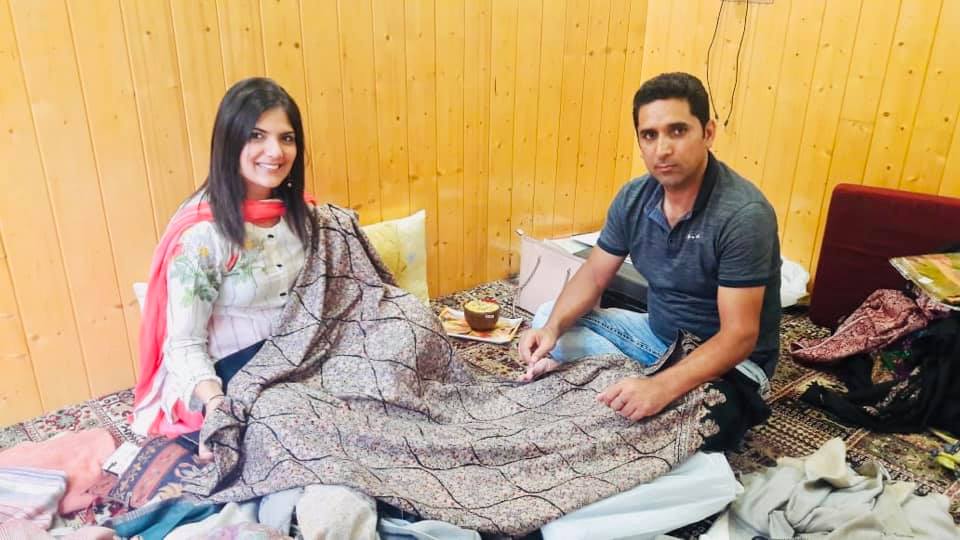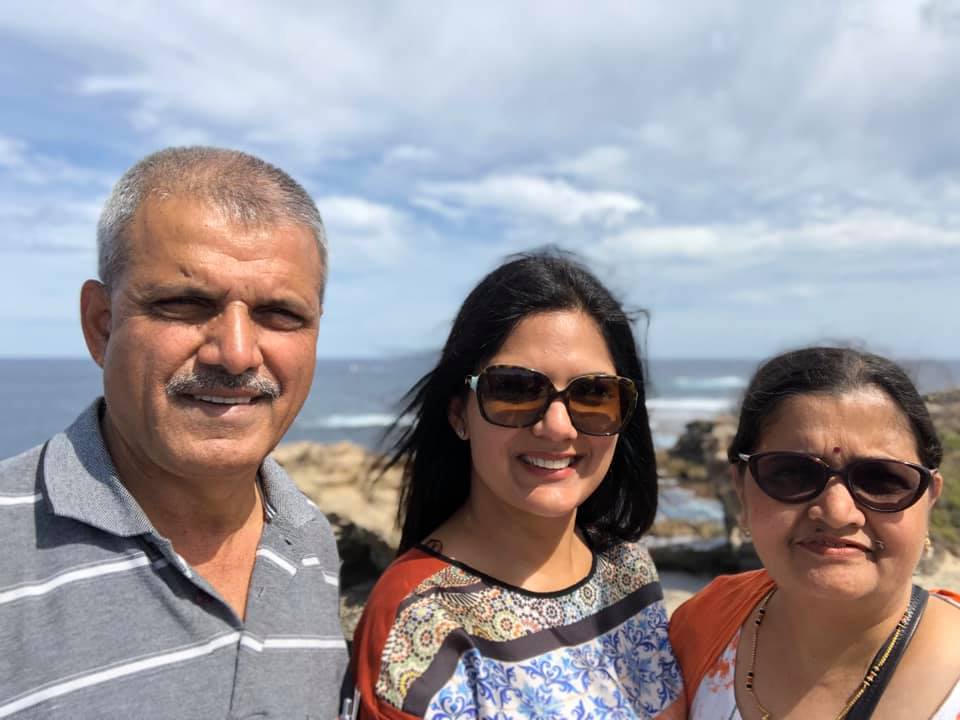Travel is the best teacher there is. This saying is used in many different contexts. When we travel, we step back in history, discover a new culture, try different foods, but most of all, encounter all kinds of people. Through my travels, I have realized that there is goodness in everyone, no matter how different we may seem on the outside. You may not share the same race, religion, economic situation or political opinion, but have one thing in common – humanity. Over and over, I have met people randomly that moved me. These are their stories. Hope they uplift you too and allow you to see the beauty in everyone you meet.
As travel is largely on hold and many of us are going through tough times, I want to share with you some uplifting true stories of chance encounters and random generosities that I encountered during my travels.

Thriving in Isolation
I had never felt more isolated than this. It took a few planes and a private boat ride to get to Ipiutaq Guest Farm in southern Greenland. Navigating icebergs, a humpback whale, and snow covered mountains, I arrived at a very private, family-run, sheep farm that had just opened its doors as a guest house with 2 bedrooms. There wasn’t even a dock for the boat. My husband and I literally had to throw our bags over a cliff & climb slippery rocks from our boat on to land!
The farm was run by a young French-Greenlandic couple, their 7-year old daughter, Ina, and an agriculture intern. This little girl was so isolated, yet filled with the world’s knowledge! There was no internet, phone, TV, or even a school or a neighbor, for miles and miles. The closest human was 40 minutes by boat in the summer and traveling by dog sled in the winter.
Yet, this little girl, Ina, could converse in 3 languages. She read lots of books and had long mature conversations with me. During our stay, I bonded with Ina. We hiked, picked herbs, had picnics, chased her dogs, licked glaciers, and watched the northern lights at midnight. Her life of isolation seemed sad at first (a 7 year old should be playing with kids her own age), but enriching at the same time (she was resourceful, outdoors and learning about life).
When I said goodbye to Ina, she cried. I wanted to give her something she would remember me by, so took off the red ruby earrings I was wearing. She still cherishes them, I hear. But this girl in isolation gave me the biggest gift. She inspired me to write my book series.
Couple of years later, I wrote my first children’s book – Beato Goes To Greenland, based on Ina. I didn’t tell her about this, though her mom and I have been in regular contact since my visit in 2014. It took a few months for Ina to receive my book by mail (traveling from Atlanta to southern Greenland). When she opened it, she was confused to see herself in the illustrations. This little girl had never imagined someone would write about her, let alone draw stark images of herself. She turned to the page that showed her with her two husky dogs and started crying. Since I last visited the dogs had been bitten by wild fox and had been put to sleep, her mom informed me. Such was the connection Ina had with her animals, as they were her closest companions at the isolated farm in Greenland.
Random Hospitality
I first met Anwar at Delhi Haat, a popular marketplace in New Delhi where vendors from all over India come to sell their handicrafts. Anwar, a young man from Kashmir, along with his brother, ran a pashmina store in the busy marketplace.
Now, for those of you who don’t know, pashmina is a finer version of cashmere, and the wool comes from a rare goat that is commonly found in the mountains of Kashmir, a region in northern India.
Over a vivid display of scarves and shawls, Anwar and I started friendly negotiations, as it is commonplace in India to bargain. He would say “this color looks great on you!” making it difficult for me to choose just one or two shawls. I would smile and joke that my husband is going to be mad when he finds out how much I spent! I ended up buying 9 pieces and he told me he could mail more if my friends in US liked them. We kept in touch through WhatsApp though I never did mail order any more items.
A couple of years later, I was in Kashmir for work, so I messaged Anwar to see if I could purchase more shawls from him. He was very excited to hear that I was in his hometown and wanted to arrange for my stay, sightseeing, etc. I thanked him for his offer but said I would come to his shop if that was ok.

So my friend and I drove over to a small storeroom located at the entrance of his family home in Srinagar. We took off our shoes (as is customary in many Indian homes), and sat on the thick wool carpeted hardwood floors. Anwar brought out homemade Kashmiri kehwa (saffron tea) and snacks. We chit chatted a bit, then browsed through his inventory.
After our personal shopping experience, Anwar asked us to join his family for lunch in the main house. It was still late morning, so we politely refused. Then he asked if we wanted to see where the Pashmina shawls were made. This definitely peaked my interest.We left our car and driver at his home, and drove with Anwar through improvised parts of Srinagar, visiting homes of people who have worked in this business for generations.
One of the artisans had a tiny room where he worked and slept. He had his handloom machine, a floor fan, and a wooden bed right beside it. We visited people who dyed the wool, stenciled designs, and embroidered elegant patterns. We also shopped for carpets, leather and silver filigree shops – this time Anwar doing the bargaining for me.
Anwar spent an entire day giving us a behind the scenes tour of the artists in Srinagar. After that, he insisted on buying us lunch. It felt strange to be sitting at a restaurant with this shawl vendor I had randomly met in Delhi a few years ago, but the love and generosity he showed us, was what uplifted me the most. We never know when we meet someone if there is any reason for our meeting, or if we are ever going to see them again. Yet we continue to reach out to strangers welcoming them with all our hearts.
If Not Now, When?
I went to Australia last year for a travel conference. I arrived in Perth on a weekend and had Sunday morning to myself. So, I took a ferry from Perth to Rottnest Island. This is a popular place for Western Australians to go for a day trip and camping weekends. The ferry was packed with people carrying beer filed coolers, ready for a sunny day at the beach. I was able to get a seat on the inside, facing an elderly Indian couple.
After a few minutes of exchanging friendly glances, the older lady could not resist to speak to me. I seemed to be the only other Indian person around. She asked me where I was from, who was I traveling with, where all I was going to in Australia, etc. Now it’s typical for Indians to be that nosy! She told me that she and her husband had come from Mumbai. They owned a vegetarian Indian casual restaurant there and that they loved to travel.

I could see that her husband had read many travel guides about Australia and was carrying a hand written itinerary. He wrote it in Marathi, the native language of Maharashtra (state in India). The pages were filled with names and addresses of hostels, Indian vegetarian restaurants (as the couple followed a strict diet), ferry schedules, and sky diving confirmations. Since they were out for a month-long vacation, they had pages and pages of travel details.
This traditional old Indian couple could have been my parents age. They didn’t fit into my profile of adventurous travelers. My brain immediately started judging them. Had they not heard of smart phones or computer print outs? Should they be skydiving, bungee jumping, walking on bridges, or staying at hostels at their age? What do their kids think about all of this?
Needless to say, I had an interesting conversation with them during the rest of the day. They told me they were in their 60’s and didn’t want to hold back on life anymore. “If not now, then when?” the lady said. So they decided to take a month long trip to Australia and do all the recommended activities that first time visitors would do.
When we stopped for a break on the island, they offered me homemade gujjia and besan ladoos (traditional Indian snacks), as well as a lunch they had packed from a vegetarian Indian restaurant in Perth. We took selfies, exchanged cards, and shared memories that I will cherish forever. Most of all, they broke many stereotypes that I had of older people and Indian travelers. It set an uplifting tone for the rest of my three weeks in Australian.